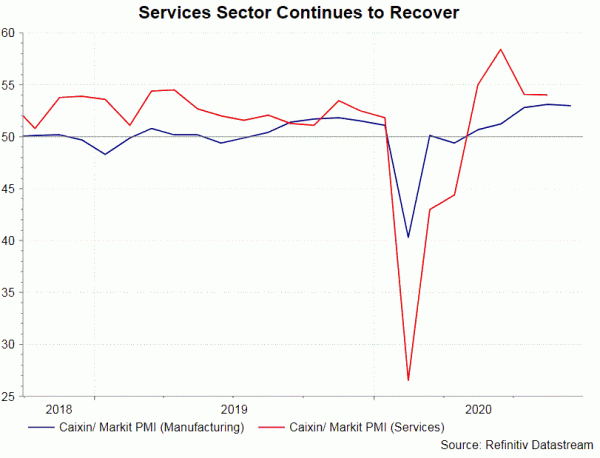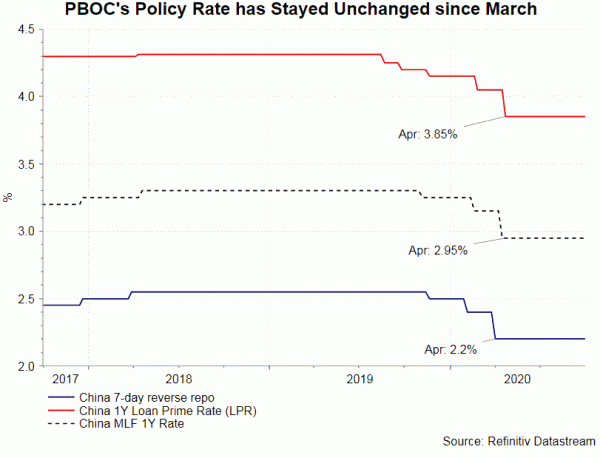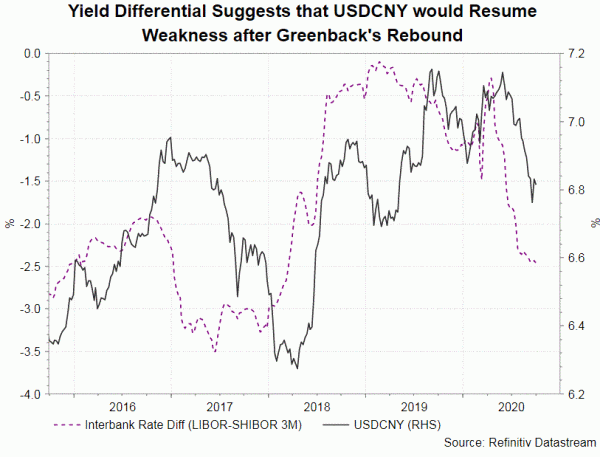The latest economic indicators show that China’s economy continued to recovery in September. NBS’ official manufacturing PMI climbed +0.5 point higher to 51.5 in September, beating consensus of 51.3. The non-manufacturing PMI also increased to 55.9 from 55.2 in August. The composite index gained +0.6 point to 55.1 last month. Focusing of SMEs, Caixin’s manufacturing PMI slipped -0.1 point to 53 in September.
Looking at the official manufacturing data, the improvement in economic activities was broadly based. On the supply side, the production index added +0.5 point to 54. The suppliers’ delivery times sub-index increased to 50.7 in September from 50.4 in August. Longer shipment time might signal more orders. On the demand side, both domestic and foreign consumption picked up. The new orders sub-index climbed +0.8 point to 52.8, while the new export orders sub- index returned to the expansionary territory for the first time this year, rising to 50.8 from 49.1 in August, The job market also improved despite staying in contraction. The manufacturing employment sub-index added +0.2 point to 49.6. On the price level, the input cost sub-index edged +0.2 point higher to 58.5, while the output price sub-index slipped -0.7 point to 52.5. The data might suggest improvement in PPM, while CPI could remain subdued.
Concerning non-manufacturing activities, the services PMI soared to 55.2 in September, strongest since June 2012. Sectors such as transportation, telecom, hotel and restaurant industries showed improvement. Meanwhile, the construction PMI stabilized at a high level of 60.2 last month.
Separately, the Caixin manufacturing PMI eased slightly from the 9-year high. Yet, the sub-indices still suggest strong underlying momentum in the economy. For instance, the new export order sub-index jumped to 54.4 in September, the highest in 6 years.
PMI reports, both from NBS and Caixin, offer the first glance of economic developments for a month. The latest reports suggest that the momentum in manufacturing activities continued to accelerate in September, while services activities continued to pick up.
Implications on the monetary policy and renminbi (CNY)
PBOC left its monetary policy unchanged in September, with the 1-year and 5-year Loan Prime Rates (LPRs) staying at 3.85% and 4.65%, respectively, since March. Ongoing recovery in the economy signals that the central bank will less unlikely cut the policy rate in coming months. Yet, China could return to a more accommodative policy stance if the number of coronavirus cases greatly increases in China and US-China trade war intensifies. These could hurt the country’s economy significantly.
Monetary policy divergence between China and the US has led to renminbi’s strength against US dollar over the past months. Despite USD’s recent rebound, we expect weakness in USDCNY to resume. The Fed’s dovish monetary policy stance suggests that the yield differential between renminbi and US dollar to persist, supporting the strength of renminbi against US dollar.


















